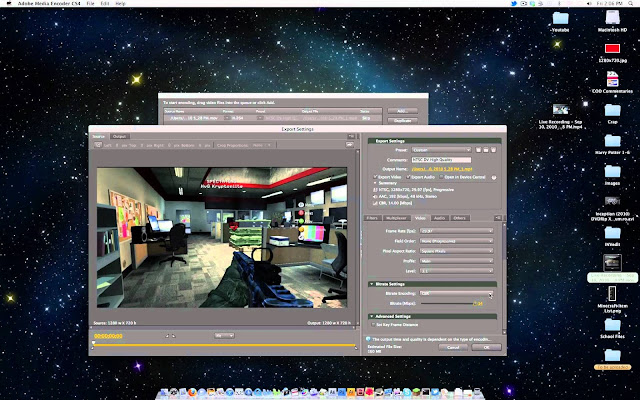
There I’d choose the format, and the preset (which in this case is YouTube 720p30), then click Export to export directly from Export Settings, wait for it to encode, and then I’d move on to Gator 2, the second sequence/clip. This would bringing up the Export Settings dialog ( Figure 3, below).
#Adobe media encoder cc optimize rendering pro
Exporting the sequence for encoding within Adobe Premiere Pro CC. So, basically, I’ve got 16 sequences here, and if I were using the traditional technique, I would select the sequence I wanted to export first, then choose File > Export > Media ( Figure 2, below).įigure 2. In the project shown in Figure 1 (below), I’m creating 16 clips from the same source video files for a new book that I’m writing.

The Traditional (Slower) Method: 16 Sequential Encodes in Export Settings

This tutorial will explain the easier and more efficient way. Obviously, some of us will need to modify these settings for the specific projects that we edit. However, if you are looking for ways to get Premiere to work even faster, optimizing your preference settings is a very good first step.If you ever find yourself having to render multiple sequences from Premiere Pro, there’s an easier way to do it than by using the Premiere Pro Export control. NOTE: Apple is moving away from Open CL, Metal will render faster – both now and in the future. Since AME handles rendering and export, change the Renderer setting at the bottom of the Queue panel to Metal. One last setting, but this one is in Adobe Media Encoder. This means that not only clips but the playhead will snap to the edges of clips and markers. If you liked how snapping worked in FCP 7, check Snap Playhead. If Your CPU Is Overloaded, Optimize It At the Start menu, search for Task Manager or press Ctrl-Alt-Dlt Click the Startup Tab Disable all the programs. This option is used for external video only. If you are not sending video to an external video monitor (as opposed to a computer monitor), turn off Enable Mercury Transmit. This is a temporary setting that only applies when an Adobe application is running.Īlso, Optimize rendering for Performance unless you have 8 GB of RAM or less. NOTE: When you quit all Adobe apps, all RAM reverts back to your system. Most standard business apps – like Browsing and email – only need a few MB to run.

The more RAM you assign to Adobe applications, the faster they will run. Use 2-3 GB if you have 8 GB of RAM or less. Set Media Cache Management to Automatically delete cache files that are older than 90 days. If Premiere needs them in the future, it will rebuild them automatically. (Thanks to Christine Steele for this tip.)ĭelete Unused Media Cache Files once a week or so. If you don’t use these type of files, you don’t need your computer wasting time checking for them. When this is checked, every 60 seconds Premiere will check your hard disk to see if these files have changed. These special files allow you to edit media while it is still being recorded. To switch back, turn this preference off. NOTE: Remember video and other bitmapped images always look their best when scaled to 100% or smaller.Įnabling proxies switches your sequence from displaying source media to proxy media. I also have a MacMini fileserver (2,6Ghz i5, 8gb RAM) which could be used for rendering jobs. Setting this to Scale to Frame Size changes the size of the image AND resets the Scale setting to 100%, so you have no idea how much the image size of the source image has been changed. I use a macbook air (1,7Ghz i7, 8gb RAM) to edit my Premiere projects. Setting this to None displays the image at 100% size, which means you have to resize it. This automatically scales an image or clip to fit inside the frame size defined for your sequence AND displays that scaling in the Effect Controls panel. This is a default preference setting that Adobe got wrong.Ĭhange Default Media Scaling to Set to Frame Size. There is no performance hit to turning this on, while, if you share a project with this turned off, someone reviewing your edit can make changes that erase what you are working on. (Yes, other settings will work, but unless you have a really good reason to choose a different sample rate, use 48,000 Hz.)īe sure Project Locking is turned on, even if you don’t plan to share projects. If your audio gear supports it, the best sample rate to use for recording audio for video is 48,000 Hz.

Want to reset a workspace? Double-click its name at the top of the Premiere interface.ĭon’t want to run the risk of resetting the Workspace? Uncheck this option in General preferences. Surprisingly, changing a few preference settings can make a big difference. I had a delightful lunch last week with a member of Premiere’s development team and, in addition to talking about all the features I’d like to see in a future version of the software, our conversation turned to ways we can use to make the current version run faster.


 0 kommentar(er)
0 kommentar(er)
